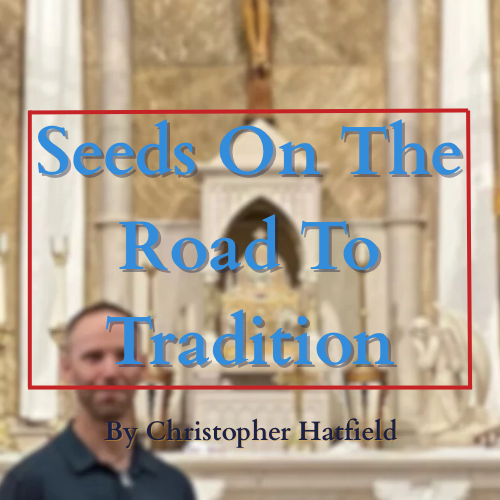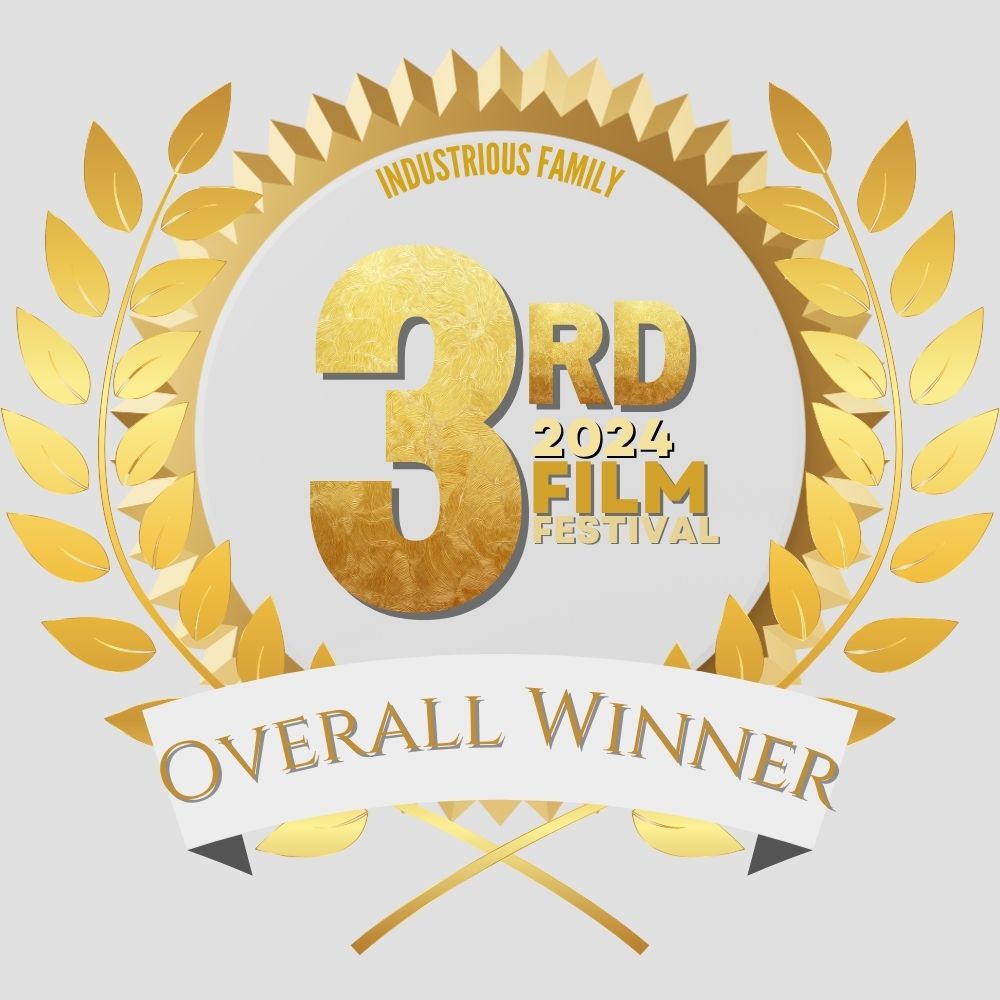Don't miss your chance to invest in 'Fabiola'!
Visit our crowd-funding page for our new production, "Fabiola"!
- Home
- Trad Seats
- Road to Tradition
Seeds on the Road to Tradition

We were all boys, dressed in black cassocks and white surplices. The older boys were privileged to carry the cross, and few, on very special occasions, carried the thurible.
We rang bells. We held patens. We genuflected and knelt.
It was not the Traditional Roman Mass (I prefer to say “Roman” instead of “Latin”), but rather a normal Novus Ordo Mass in my diocese at the time. This lasted from when I first learned to serve—somewhere around 10 years old, I think—for only a couple more years.
Then, suddenly the cassocks and surplices were gone and substituted with white albs and gold or blue cincture cords. Girls weren’t serving, yet, but the Masses became more folksy, the genuflections faded, and everything became more casual.
This lasted a few years until that pastor retired and a new, younger monsignor who had studied in Rome took over. He kept the albs but reintroduced some solemnity. Chalices gilded in precious medals returned, this time accompanied by chalice veils.
When this new pastor arrived, I had already entered high school and stopped serving Mass at that parish, but occasionally I still attended daily Mass before classes. One day, the elderly man who normally served that Mass was absent, and the pastor asked me to step in. I agreed. As I opened the wardrobe to reach for a white alb and cincture, he stopped me.
“No . . . wear this,” he said, opening the door to the wardrobe that contained the priests’ vestments.
He handed me a cassock and a long, heavy surplice made from much denser fabric than I expected, not like the thin, translucent, cheap surplices I had worn many years before.
It was as if he knew the albs weren’t fit for a man serving at the altar, and yet, I knew, he had the younger boys wear them. As he began to vest himself, he explained the prayers he prayed while donning the various vestments. He had begun to train me for the seminary which, to his later disappointment, I would not attend. I would, however, go on to serve for this priest on and off for the next couple of years. A few small seeds were planted.
WATCH: "Trad Seats": A Tribute to the Faithful Who Embrace the Traditional Roman Rite
His devotion to the Blessed Sacrament and his gesture toward me of handing me the more traditional vestment led me to wonder why so much seemed to have changed and why the Mass seemed so variable and vulnerable to whim and whimsy while, at the same time, also occasionally—not nearly always, it seemed at that time—the object of the ultimate reverence and devotion.
I knew of the Real Presence and understood why we should be reverent, and I did not understand why such reverence would ever be compromised with sillier vestments, folksier music, and more casually conversational ceremonial interaction.
More Seeds
That diocese held a summer retreat for boys focused on vocational discernment in which the priests, deacons, and seminarians who spoke, facilitated, said and assisted at Mass, all wore cassocks, sang Latin hymns, chanted Mass parts, incensed the altar, prayed the Liturgy of the Hours with us, and taught us some of the theology behind it all.
I attended this retreat three or four times with the friend who introduced me to it during our high school years.
Again, I wondered why these practices were done here but nowhere else I attended Mass in the diocese. A few more seeds on my road to Tradition were planted.
READ: From Stakeouts to Sanctuaries: How a Parking Lot Encounter Led Me to Stumble upon Tradition
I began to sneak peeks into and study the documents in the front of the Sacramentary, the Lectionary, any books I could find in the Sacristy, and then, sometime in the middle of high school, I began scouring the Catholic Answers website.
I studied the General Instruction of the Roman Missal and was struck by something that never left my mind: Why would it instruct the priest to “turn to face the people” if he was already always facing the people?
More questions began to form and to linger. I had begun to sense that something was missing even from the relatively reverent Novus Ordo Masses that I experienced. I began to feel uneasy at less reverent Masses, especially the new Life Teen Masses and the Masses that we had started to experience in high school.
I began to ask myself—and God—What WAS Mass like before the changes, and WHY was it changed?
My First Ad Orientem Mass: Is This the Tradition?
Then, in my last year of college, at the Newman Center, a new, young priest arrived. He was bald, short, and stocky, clearly a football player or wrestler—probably both. His hands were massive and thickly muscled, and he always held them with fingers tightly together and pointed straight up as he held his hands closer to his shoulders and his elbows more closely to his side in the “orans” position, performing this position in a manner I later recognized as more traditional than most other priests did it with their hands outstretched to their sides. Actually, I reminded myself, my prior pastor and a couple of the assistants he had once had also done it that way.
READ: Finding Our Home In Tradition
One day, I arrived to see the items on the altar at the Newman Center facing the “wrong” way.
Had a new acolyte gotten mixed up?
Had Father gotten confused, gone crazy...
What was this?
Mass started, and he processed to the Sanctuary wearing a kind of chasuble I had never seen before. Its broadness at the shoulders had a strangely masculine appearance, almost like ancient armor, appealing to me as a young man admiring the masculine, militant features of a warrior that he desires to emulate.
He prayed the Mass ad orientem, using many Latin prayers. I thought I was attending the Traditional “Latin Mass”! As I would learn many years later, this was not the case, but it was the closest this priest could get until several years after this Mass, when he was allowed to start using the Traditional forms of the Sacraments using the 1962 Missal at a combined parish on the periphery of the diocese.
Another, huge seed had been planted. What was this Tradition? And why was it being kept from us?
To Trad or Not to Trad? That Was the Question
After a few years in the Air Force, singing in the schola at the cathedral in the city where I served, I was invited to assist with a new Mass offered on Sunday evenings. I helped the Music Director chant some parts for this special Dominican Rite Mass that I had never seen before.
I knew it was Latin, and I knew it was all done facing ad orientem, and I didn’t understand anything else about it. For some reason, I don’t remember realizing that this was, essentially, the Dominican equivalent of what I now know as the Traditional Roman Mass, and I don’t know why I did not make that connection.
It was so foreign to me, I didn’t know how to process it. I had attended a version of the Traditional Mass, and I couldn’t appreciate—or even comprehend—it!
A few years later, I realized it.
I was online searching for everything I could find related to Catholic Tradition and the Latin Mass. I found a blog that informed me that there was a parish in my local area that used the Traditional Mass! I resolved to check it out soon when my wife took our son to visit family out of state (I couldn’t go on that trip due to work).
My first intentional Traditional Mass was a failure.
It was Passion Sunday. I accidentally stood in the Confession line along the back wall of the nave, obstructing people and earning myself the suspicious glances I had grown to fear from my research (The judgmental “trads” were on to me! The invader!), including from the priest at the Asperges.
I was standing directly under the lights under the choir loft in my best suit, and I was quickly drenching in sweat. To top it off, I had woken up with a cold that had my nose running profusely. I made it through the sermon, bailed out, and drove back to my familiar Novus Ordo parish . . . which had the AC cranked up so high the sweat that was still coating my skin under my suit began to feel like it was freezing on my skin.
But...as I sat through Mass, something felt very wrong. What—a—contrast.
I went back to the Traditional chapel for a daily Mass. And then another. And then another. I convinced my wife to attend her first Traditional Roman Mass on Christmas (Midnight Mass) because we had tried all the other available truly-midnight Masses in town, and they were—shall we say—not up to our growing standards of reverence.
She was more nervous than I had been about these “trads” and their likely judgmentalness. But, as a rigid midnightist, she would accept no less than a midnight Midnight Mass.
The Breaking Point on the Road to Tradition
Mass was lovely. We went up to Communion at the rail. I let her go ahead of me, and she was first to the rail and received first. I received and got up, but she stayed behind. I figured she had observed that the normal practice was to return to the pew to pray, but I thought maybe she was so moved by the Traditional Mass that she wanted another second or two to take it all in up close. That wouldn’t hurt anybody.
We finished Mass, briefly attended the social and ate some sweets, then arrived home around 2:15AM. She went straight to the couch and said, “You should call the midwife.”
Me: Blank stare.
Her: You...should...call...the...midwife.
Me: [Processing slowly] Why...Oh!
READ: Living As Catholics In The World But Not Of It
Our second child—first daughter—was born a little more than four hours later. My wife hadn’t mentioned that she had been gradually laboring all day until her first “big-ish” contraction at the altar rail . . .
We took two more months to decide that we needed to just dive in and join this parish and meet people, including our daughter’s godparents. We were still learning about traditional teachings, recently being admonished via a recorded sermon that we were not to delay baptism (different from our previous experience in the Novus Ordo).
We had no family that we thought should be godparents, and we had not developed any friendships in any of the parishes we had tried.
We went back to our new parish home.
After Mass, at the social, I walked up to one of the priests, whose voice I had recognized as that of my favorite preacher from my favorite sermon podcast, and told him of our situation. He talked briefly with the pastor, and the pastor pointed out a couple about our age who had just walked into the social hall.
We introduced each other, chatted momentarily, and then I awkwardly asked if they would be our daughter’s godparents. He laughed, pulled me into a hug, and explained that this was the second time in a short time that this had happened to them for some reason.
Our daughter was baptized just days later, our first in the Traditional Rite. Eleven years later, that parish is still our home, where Tradition continues to grow and flourish to this day.

Christopher Hatfield is a Traditional Catholic father of 4.
In his spare time Chris likes to weight train, sing, coach (and play) baseball, play soccer, and study theology and the weather.
Besides enjoying impersonating Gandalf for family and friends, Chris has been cast as Fabius in the upcoming Industrious Family Film Fabiola.
Families who have found the Traditional Roman Rite like Chris' are featured in our new music video Trad Seats. Give it a listen here!
Subscribe To Our FREE Email Newsletter:
Awards:


#RebuildChristianArt Blog
An aid for families encouraging the reconstruction of the social fabric by sparking interest in Christian art and culture. Find beautiful novels, films, music, food and customs.
What's New At The Studio
-
The Greatest Story Ever Told Continues To Unfold: Roses in December
Dec 12, 25 02:58 PM
-
Last Year’s Christmas Special Is Available to Stream Now!
Dec 12, 25 09:00 AM
-
✨ A Heartwarming Christmas Short: A Home For Christmas Now Streaming! 🎄
Dec 11, 25 09:00 AM
